Indoor citrus varieties are compact, they rarely grow more than two meters in height. How to care for a lemon on a windowsill so that it grows, blooms and bears fruit safely, read the article.
Material Content:
Variety Selection for Home Growing
When choosing a lemon for home growing, you need to consider its need for lighting. If the windows of the apartment face west or north, you can choose Pavlovsky lemonIt grows beautifully on the northern windows. This variety is unpretentious in cultivation, begins to bear fruit for 3-4 years of life, bringing from 20 to 40 delicious medium-sized fruits.

For more experienced growers, a variety is suitable Meyer or chinese lemon. It is demanding on watering, lighting and air temperature. If in winter the room where it grows is more than +12 ° C, the fruits may not start.
It has a beautiful flowering variety Anniversary. Flowers, collected in inflorescences of 14 pieces, are white with a purple hue. The fruits are large, can reach 600 g, they begin to set in 3-4 years after planting. The variety is undemanding to watering and humidity.
Grade Maykop attracted by high productivity. An adult tree can produce annually from 100 to 300 fruits weighing about 150 g. He prefers overwintering lemon in a cool room.
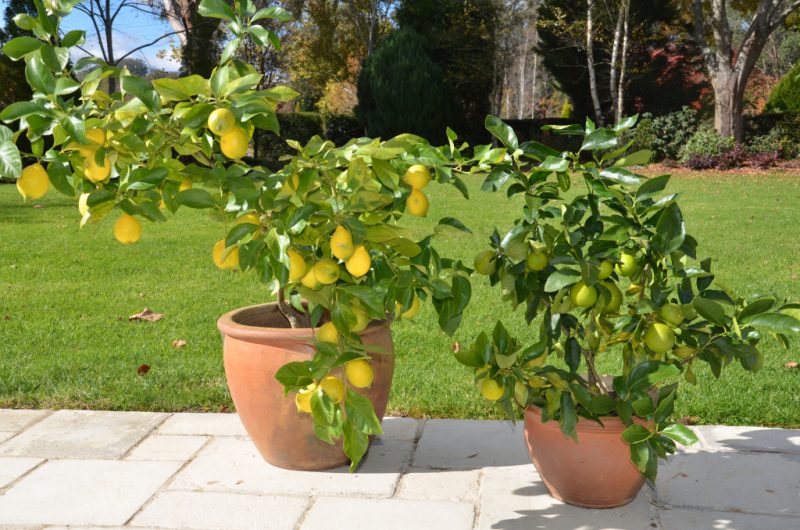
Large fruits, weighing more than 500 g, grow on variety Panderosis. This hybrid was obtained by crossing citron and lemon. He normally tolerates dry, hot air, loves bright diffused light, needs frequent top dressing. Blooms in large creamy white flowers.
Delicious miniature lemons, with a diameter of about 4 cm gives a variety Volcano. This dwarf tree does not exceed 1.2 m.It is very decorative, because it blooms all year round, on it you can often see flowers and fruits at the same time.
Optimal conditions for breeding room lemon
It is advisable to choose a well-lit place for indoor lemon, where it will be protected from direct sunlight. In order for the crown to develop evenly, the plant is turned to the window several degrees 1 time in 10 days.
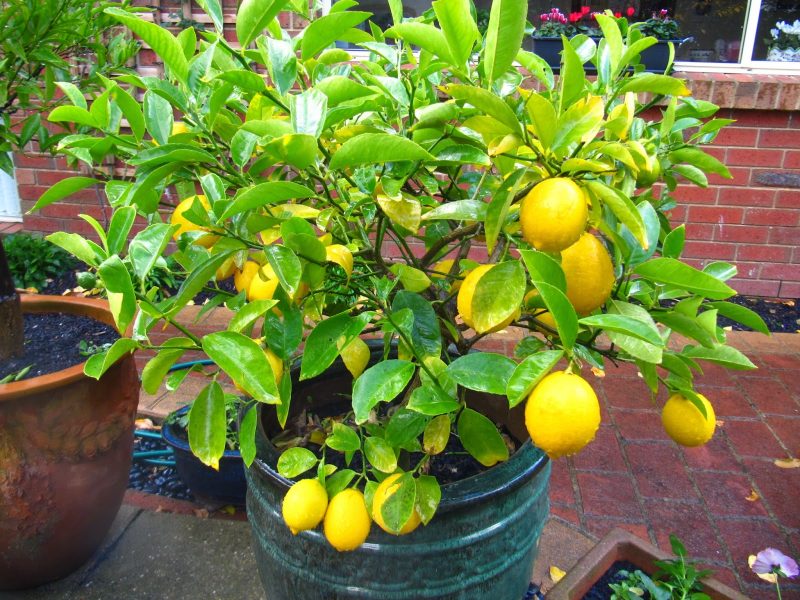
Growing conditions and lemon care:
- soil with a slightly acid reaction (pH 6);
- regular feeding all year round;
- backlighting in winter;
- plentiful summer watering;
- air temperature from 14 to 27 ° C;
- forming cropping.
You need to feed homemade lemon, alternating mineral and organic fertilizers. When a tree begins to bear fruit, additional nutrition is especially necessary for it.
You can make nitrophosk under lemons. Well-perceived plants fertilizer Fertiku or Pokon for citrus. In winter, the lemon is fertilized only with wood ash (1-2 tbsp. L per 1 liter of water). From early spring to late autumn, they are fed vermicompost, where there is more nitrogen that promotes leaf growth. In summer, fertilizers should be applied once every 2 weeks, in winter - once a month.
How to water a tree properly
Watering the plant is necessary as the soil dries in the pot. In summer, when the evaporation of moisture is stronger, this is done more often. If the plant is outdoors - in the garden or on the veranda, it needs daily watering.
You can check the soil moisture level with an indicator or by touch, if it has dried to a depth of 5 cm, watering is carried out. Water is taken at room temperature. He likes lemon spraying in the morning, when the sun's rays will not leave burns on the wet leaves.
Cropping technology
In order for the plants to have a compact shape, they need formative pruning. Trimming the top of the shoot is best in January, when the plant is still at rest.
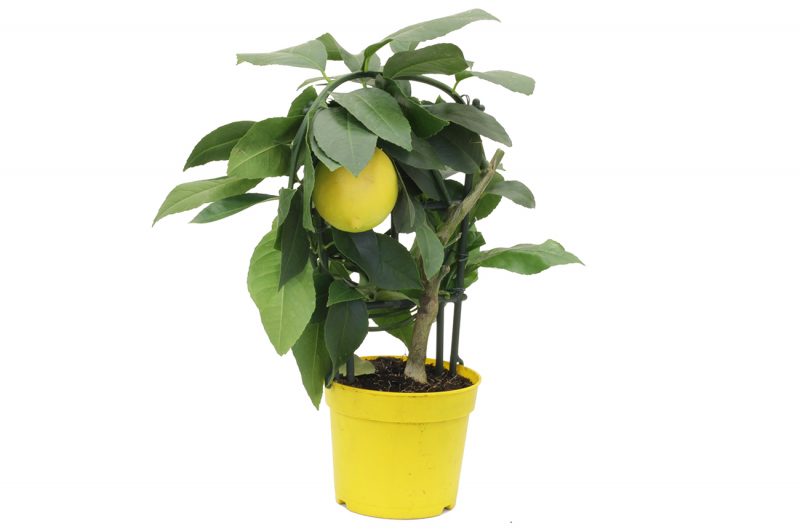
In February, indoor lemon will begin to "wake up", and will give lateral shoots of 3-4 buds located closest to the apex. Lateral shoots are also cut off, leaving 3-4 internodes, after which third-order branches begin to awaken.
Formation is necessary for good fruiting. The more branching orders a plant has, the more fruits.
In order for the plant to begin to bear fruit faster, the branches must be taken to a horizontal position. This can be done using thick copper wire.
Lemon cuttings left after pruning can be rooted in sand or perlite; they easily let the roots out after about a month. Then they are transplanted into fertile soil.
Basic Transplant Rules
Transplant pots must be sized for the root system. It is undesirable to place a plant in a spacious landing container.
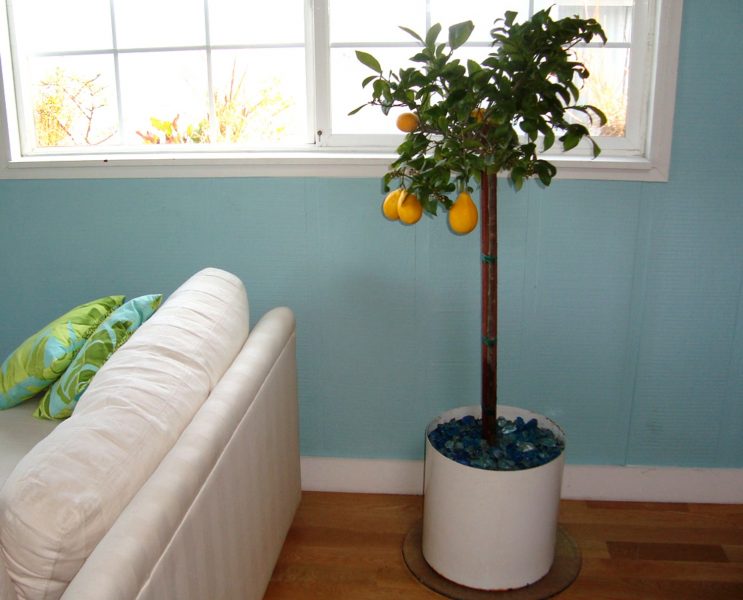
While the citrus is young, it is transplanted 2 times a year. For an adult 8-year-old lemon, the earth can be renewed once every 5 years.
To prepare the soil take compost, humus, coarse sand. It is good to add pine bark of a small fraction, then the root system is better developed.
You can not use sphagnum moss as a mulch for lemon, it retains moisture for a very long time, this leads to decay of the root neck, and the death of the plant. Shredded pine bark is best suited as mulch.
How to care for lemon during flowering
On a young lemon, it is better to cut off the blossoming flowers so that he regains strength, grows roots and leaves, and only then bears fruit. The plant must grow at least 20 leaves so that it can produce the first few fruits, and then bear fruit annually.
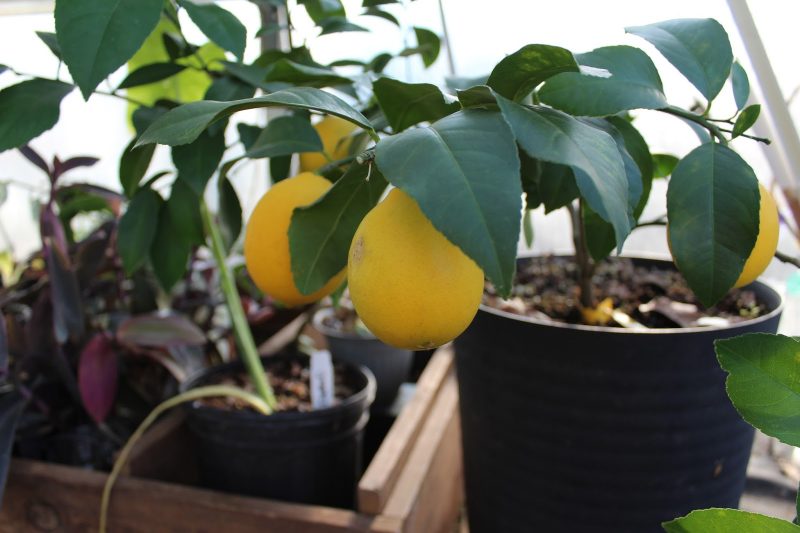
In order for a full-fledged crop to grow at home, flowers need to be pollinated. Citrus fruits are tied without pollination, but seeds are formed in them, only with cross-pollination. If there was no pollination, the fruits are smaller in size, the ovaries are worse kept on branches, sometimes fall off.

The more fruits there are on the tree, the smaller they will grow, so some of the ovaries are removed immediately after flowering. Leave, usually, from several nearby the largest. Citrus fruits have a very long fruit ripening period, from 7 to 9 months.
Pest and Disease Control
If the root system is rotten, the leaves fall off. This occurs when the plant overflows. Intensive watering in the cold season is dangerous. To help the lemon, which begins to "bald", it is transplanted into a pot with fresh soil.

The roots are well cleaned of the old substrate, washed under warm water, cut off all rotted. You can put the plant for several hours in a solution of Kornevin (1 tsp. Per 1 liter of water). Then the roots are sprinkled with Fundazol and charcoal, and planted in a "Universal" substrate.
Noticing pests on the tree, they are treated with Fitoverm. Most often, a spider mite and a scavenger settle on a lemon. Two sprays are carried out against insects with an interval of 5-7 days.
What difficulties can be encountered when growing and caring
In evergreens, food is deposited in the leaves, so they need to be protected. Sometimes, lemon discards foliage, and its existence is threatened.
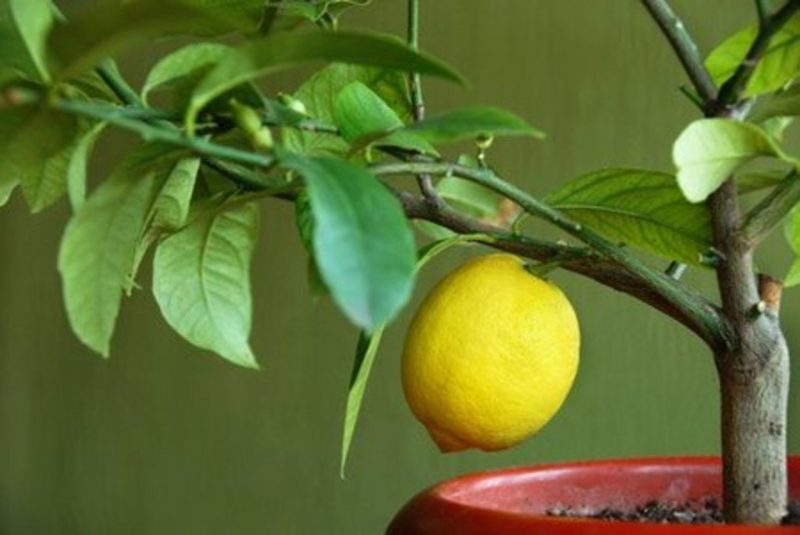
Reasons for leaf fall and treatment:
- When drying an earthen coma, a lemon can discard foliage. To help the plant, it is watered and put on the lightest window sill. When new leaves grow, all dry branches are cut.
- Lemon can drop leaves in 1-2 months after buying it in a flower shop. This is due to the fact that the room conditions are very different from the greenhouse, to which the plant is accustomed. Lemon lacks primarily light. Noticing the falling of leaves, it is necessary to organize illumination for the plant.
- Low humidity also contributes to leaf fall. You can buy a humidifier or just spray 2-3 times a week on a plant leaves with water at room temperature.
- Yellowing and falling of leaves can be caused by malnutrition. The plant needs to be fed and transplanted into fertile soil.
- If the leaves have fallen, you need to transplant the lemon, feed it, and cover it with a bag to create increased humidity, then young branches and roots will grow. You can’t immediately remove the package, this is done gradually. You can treat a weak plant with Epin.
“Aboriginal” plants are more stable and unpretentious than those bought in a store; you can grow a tree from a lemon seed yourself. To do this, put a fresh seed in a pot of earth, deepening by 1 cm, it will rise in about 1 week. So that lemons grown from seeds begin to bear fruit, they are inoculated when the trunk thickness reaches 4 mm. Vaccination can be done about a year after seedling germination.












